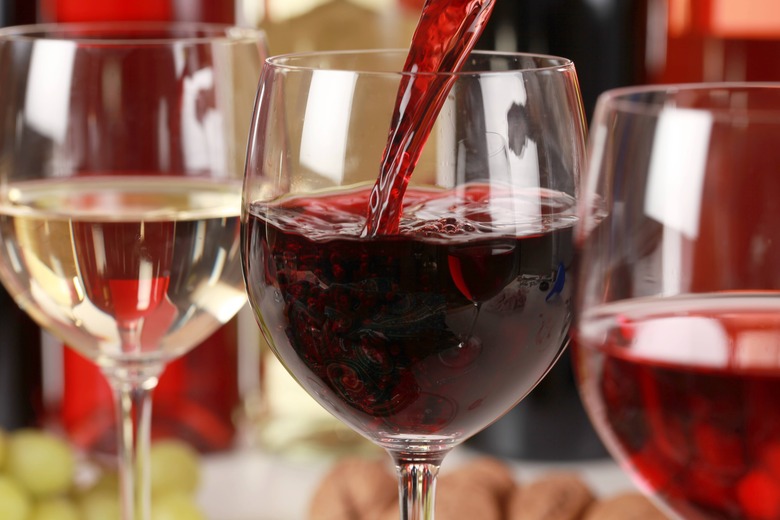There May Be More Alcohol In Your Wine Than You Think
If you think the wines you're drinking with dinner are more alcoholic today than they were a decade ago, and you're just paranoid enough to believe wine labels lie about how much alcohol is really in the bottle, most likely you are right on both counts.
A new scientific study of almost 100,000 different wines produced around the world shows that American winemakers routinely understate the amount of alcohol in their wines on average by a perceptible almost one-half percent, and the rest of the world is not far behind. In other words, that Napa Valley cabernet in your glass that the label says is 14.6 percent alcohol is most likely topping out at over 15 percent, and the Sonoma County chardonnay is most likely nearer to 14.5 than 14 percent alcohol.
But before you call your lawyer to file a class-action suit, consider two things: The label inaccuracies are generally legal in all countries, and the winemakers are only telling you what you've told them you want to hear.
The study, published in the current issue (Vol. 10, No. 3) of the Journal of Wine Economics, is the work of five researchers, two from the University of California at Davis and one each from Montana State University, the Liquor Control Board of Ottawa, and ERA Economics. As the province-run Ottawa board routinely samples all wines sold there, the researchers were able to get precise alcohol levels from 91,432 applicable wines from around the world.
As the authors point out, global warming and better winemaking practices have produced riper, fruitier wines, whose taste most wine critics and drinkers love. The flip side is that this also means these wines must be either sweeter or more alcoholic, two qualities which many sophisticated drinkers passionately hate. For example, in recent years, some restaurant sommeliers have decreed that they won't put wines over 14 or 15 percent alcohol on their lists, claiming they are too hot or unbalanced, and many wine drinkers now also check the labels in their wine shop before deciding whether to buy.
"The implied average values for these norms revealed by our analysis are approximately 12.8 percent alcohol (by volume) for Old World red, 12.3 percent alcohol for Old World white, 13.2 percent alcohol for New World red, and 12.7 percent alcohol for New World white," the authors write. "The alcohol content of much wine is high and rising relative to these norms, which can account for why the label claims on average understate the true alcohol content by about 0.39 percent alcohol for Old World wine (red or white) and about 0.45 percent for New World wine (red or white)."
The scientists conclude that "label claims appear to be biased towards a perceived norm, a 'desired' alcohol percentage to report for a particular wine — red or white, New World or Old World — with the size of the bias depending on the extent to which the actual alcohol content differs from that norm."
But isn't that practice illegal?
Generally not, although it is disingenuous, as it is very easy to precisely measure the amount of alcohol in a batch being bottled. However, U.S. federal regulations permit the labels for wines under 14 percent alcohol to vary from the actual reading as much as 1.5 percent and by 1.0 percent in wines over 14.0 percent, which also constitutes a higher tax bracket. Thus the 0.45 percent average under-reporting is well within both legal limits. Most countries, the authors state, allow similar fluctuations.
But remember, those are averages, which means that some wines you are drinking are more than one percent higher than what's stated on the bottle, while some are less and some are exactly what the winemakers tell you they are.
The Journal authors realize a certain humor results from their scientific conclusions: "Finally, to return to our main finding, we have suggested that the substantial, pervasive, systematic errors in the stated alcohol percentage of wine are consistent with a model in which winemakers perceive that consumers demand wine with a stated alcohol content that is different from the actual alcohol content, and winemakers err in the direction of providing consumers with what they appear to want. What remains to be resolved is why consumers choose to pay winemakers to lie to them."
